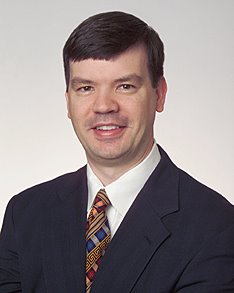
Fan's of NBC's show "Heroes" will appreciate the title for this post.
Cast-member, Hayden Panettiere, who plays a high-school cheerleader who has the ability to heal any injury, is pictured to the right.
Out of all athletic events, probably the riskiest one for serious injuries to participants is now cheer leading believe it or not. The nearly 25,000 injuries annually treated in ER's has doubled over the last 15 years as increasingly risky tumbling maneuvers have become routine. There's a great story on this in the New York Times "As Cheerleaders Soar Higher, So Does the Danger" (click to read). From the article:
In 2005, the National Collegiate Athletic Association’s Catastrophic Injury Insurance Program found that 25 percent of the money spent on claims for student-athletes since 1998 resulted from cheerleading. That made it second only to football.
For "not so great moments in cheerleading" click the YouTube window below.
During my Plastic Surgery residency,I did my training in hand surgery at the Kleinert Institute in Louisville (KY), which is kind of like the Mayo Clinic for hand surgery. People come from all over the world for evaluation and treatment of complex upper extremity injuries and problems. Kentucky is also home to the two most decorated collegiate cheer leading squads in the country at the University of Louisville and the University of Kentucky (which is an hour east in Lexington,KY). Competitive cheer leading is also a very big sport among high school girls in the area.
At least 2-3 times a week at the Kleinert clinics I can remember seeing broken hands and awful traumatic wrist injuries from tumbling exercises or falls in teens. The xrays of the hands/wrists of some of these girls with repative injuries had degenerative changes resembling of 50 or 60 year olds with arthritis.
In particular, tears of the distal radio-ulnar joint (DRUJ) was a particularly nasty injury ensuring a lifetime of future wrist pain. Pain secondary to DRUJ instability is located on the ulnar side of the wrist and is intensified by pronation or supination. DRUJ pain & injuries are also increasingly common in high-level tennis players who use two-handed backhands (usually in the non-dominant wrist) This tear of the cartilage and ligaments at the wrist progressive makes rotation and stability of the hand/wrist compromised and has historically had only partial relief with surgery. Not only do you suffer a loss of mobility of the wrist, you can get intense pain while trying to perform simple tasks, like turning a door knob or lifting a light object, or even while sleeping. It's a really bad condition to develop.
Pictured below is an xray of the wrist with dye injected demonstrating free leakage outside of the joint from a tear.

The most common surgical solution was to cut off part of the distal ulna to prevent the two forearm bones from painfully grinding on one another. And while this helps pain sometimes, patients still had little functionality left in the wrist. A revolutionary device, an artificial DRUJ replacement device called the APTIS was developed in 2005 by one of my mentors from the Kleinert Institute, Dr. Luis Scheker and is being increasingly used to treat the intractable wrist problems associated with this.






4 comments:
doc,
thanks for visiting and commenting on my blog. if you see the ''two dudes'' down your way please call the authorities, it would certainly make my life easier. welcome to my blogroll.
911doc
I got a brief view into competitive cheerleading in high school. I was only a low grade JV cheerleader, but the varsity squad was extremely advanced and competitive. Girls and guys would leave that team completely broken....at least three people would be in casts per season. It's insane.
Good post and this fill someone in on helped me alot in my college assignement. Thank you seeking your information.
Cheerleading injuries are best helped by Dallas plastic surgeons.
Post a Comment